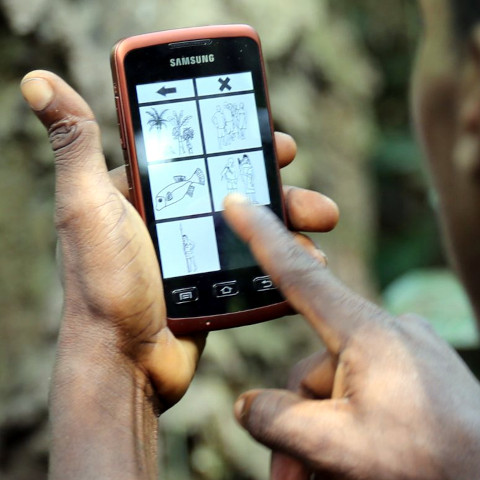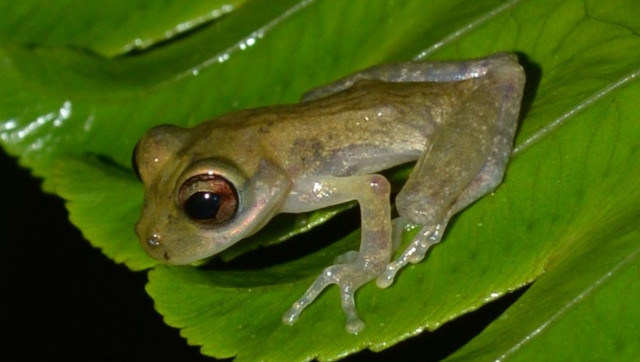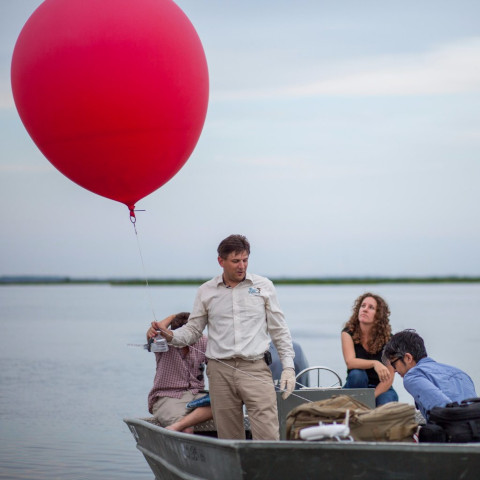The UNESCO Recommendation on Open Science lists “Collaboration, participation and inclusion” as a major guiding principle. We have just learned about Roland’s story. Here, we will highlight citizen science projects that demonstrate how open science processes and outputs complement each other.
Sapelli is an open source data collection app developed by the Extreme Citizen Science group (ExCiteS) at University College London in the United Kingdom. Sapelli’s user interface stands out by being completely visual with no text. As part of a citizen science project in Cameroon, indigenous peoples used Sapelli to report illegal widlife crimes in their communities. Most of these citizen scientists were not literate and couldn’t read, but thanks to Sapelli they were still able to fully engage in data collection.

Photo by Sapelli, modified from official website, CC BY 4.0
iNaturalist is a mobile app for citizen scientists to share and help identify each other’s wildlife photos. Much of their research-grade photos are published as open data in the Global Biodiversity Information Facility (GBIF) [1], and all the iNaturalist source code is open source. Jonatan Svenson Glad, an editor on Wikipedia, noticed that many entries about endangered species in this online encyclopedia lacked photos. Since many high-quality photos from iNaturalist used open science-friendly Creative Commons licenses (such as CC BY or CC BY-SA), it was easy for Jonatan to organise a campaign to incorporate them into Wikipedia articles on endangered species [2]. For example, the Wikipedia entry on the endangered Mount Tucuche tree frog now features a striking photo taken by an iNaturalist citizen scientist.

Photo of Mount Tucuche tree frog by Renoir J. Auguste on Wikimedia Commons, CC BY-SA 4.0
Fieldkit is an environmental sensing platform designed to be easy to build and operate. The kit comes with a selection of sensor modules for measuring temperature or water conductivity and pH levels. There is an online platform for data upload and analyses. Fieldkit also consists of an active community of citizen scientists, engineers, professional scientists, and educators working together for environmental research and advocacy. Since the whole package is fully open source, participants are empowered to adapt any aspect of Fieldkit to their needs, such as by building a custom sensor module or modifying the software.
The story of Public Lab connects almost every open science concept introduced in this course. Originally started by concerned citizens to monitor the 2010 Deepwater Horizon oil spill, Public Lab now hosts a wide network of citizen science projects around the world. Participants come from all walks of life, and they collaborate on the Public Lab website via a citizen scientist-maintained knowledge base, forums, and various project pages. There they share knowledge across the entire research lifecycle, from planning a study, organising logistics, developing software and hardware, data collection, to sharing results. Public Lab projects are as diverse as the citizen scientists: One initiative collected evidence of a logistics company dumping toxic waste into the Mississippi River [3]. On the other side of the world, a group of Palestinian refugees are using the Public Lab’s open source balloon air-mapping kit to plan and build the first dedicated green space in the Bourj Al Shamali refugee camp [4].

Air balloon mapping photo by Public Lab from here, CC BY-SA 3.0
1. Ueda K., 2021. iNaturalist Research-grade Observations. iNaturalist.org. Occurrence dataset. https://doi.org/10.15468/ab3s5x
2. Glad, J. S., 2020. Photos of threatened species from iNaturalist. The Signpost. Available from: https://en.wikipedia.org/w/index.php?title=Wikipedia:Wikipedia_Signpost/2020-08-02/Gallery
3. Saul, J., 2014. Environmental groups sue plaquemines coal terminal for violating Clean Water Act. New Orleans Public Radio WWNO. Available from: https://www.wwno.org/show/all-things-new-orleans/2014-03-18/environmental-groups-sue-plaquemines-coal-terminal-for-violating-clean-water-act
4. Mansell, C. M., Ismail, F., Dakhloul, M., Al Joumma, M., & Al Saeid, A. (2019, September 30). Bourj Al Shamali refugee camp. Public Lab. https://publiclab.org/n/12176